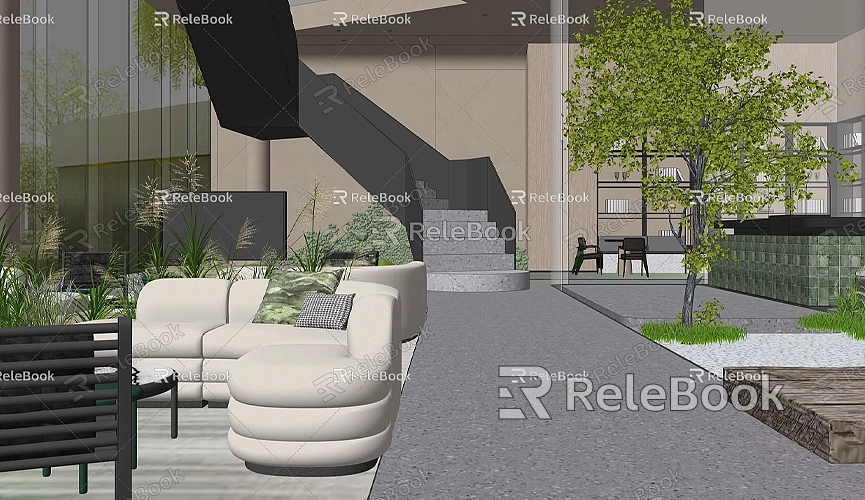How to get sketchup models into blender
In fields like architecture, interior design, and other 3D modeling projects, both SketchUp and Blender are popular tools. SketchUp is known for its ease of use and intuitive modeling workflow, while Blender is praised for its advanced rendering and animation capabilities. Importing SketchUp models into Blender allows you to leverage Blender’s powerful features, achieving higher-quality renders and animations. This guide explains how to transfer your SketchUp models into Blender smoothly, ensuring they look great in their new environment.
Understanding File Formats
Before importing, it’s crucial to understand the file formats supported by SketchUp and Blender. SketchUp primarily uses the SKP file format, whereas Blender supports various formats, including OBJ, FBX, and DAE. To ensure a smooth transition, you’ll usually need to export the SketchUp model to a format that Blender can easily read.
Preparing the SketchUp Model

Before exporting from SketchUp, follow these key preparation steps:
- Clean Up the Model: Before exporting, review and delete unnecessary elements and layers. This reduces model complexity and improves Blender’s performance.
- Organize Components: Group similar components for easier management in Blender. Using groups and components makes the model’s structure clearer.
- Check Textures and Materials: Make sure textures are correctly applied in SketchUp. Some textures may require re-adjustment once imported into Blender.
- Set Units and Scale: Confirm that the units in SketchUp match those in Blender to avoid scaling issues post-import.
Exporting the Model from SketchUp
To export the model, open your SketchUp project and follow these steps:
1. Go to the “File” menu and select “Export.”
2. Choose “3D Model” and, in the export dialog, select a suitable file format such as OBJ or DAE. OBJ is often preferred for its simplicity and compatibility.
3. Select a convenient location to save the exported file, and click “Export.” During export, ensure options related to textures or materials are selected (if available) to simplify work in Blender.
Importing into Blender
Once your model is successfully exported, you can start importing it into Blender. Open Blender, create a new project, or use an existing one, and then proceed as follows:
1. In the “File” menu, select “Import.”
2. Choose the file format of the exported model (e.g., OBJ or DAE).
3. Locate and select the exported file, then click “Import.” In the import dialog, confirm the import settings, particularly options related to scaling.
Once imported, you should see the SketchUp model in Blender’s workspace.
Adjusting the Model in Blender

After importing the model, make adjustments to ensure the best results:
- Check Scale and Orientation: The model may appear too large or too small. Use Blender’s properties panel to adjust scale so it fits the scene correctly.
- Reapply Textures: If textures don’t display correctly, check file paths and make sure texture files are in the same directory as the model file. Reapply textures as needed.
- Optimize Geometry: If the model is overly complex, use Blender’s modifiers to simplify the geometry and enhance performance.
- Organize the Scene: Use collections in Blender to organize objects for efficient scene management.
Common Issues and Solutions
During the import process, you may encounter some common issues:
- Missing Textures: If textures aren’t showing, check that file paths are correct and that texture files were saved correctly.
- Scaling Problems: If the model size is off, revisit SketchUp’s export settings and Blender’s import settings to ensure units match.
- Geometry Issues: If you notice overlapping faces or other geometry issues, use Blender’s mesh cleanup tools to correct them.
Importing SketchUp models into Blender can enhance your workflow by enabling high-quality renders and animations with Blender’s powerful features. By preparing your SketchUp model carefully, selecting the appropriate export format, and making necessary adjustments in Blender, you’ll ensure a successful transition.
For frequent 3D modeling tasks, high-quality textures and models can greatly improve your projects. To create models and virtual scenes, consider using high-quality 3D textures and HDRIs, which can be downloaded for free from [Relebook](https://textures.relebook.com/). You can also find beautiful 3D models at [Relebook’s 3D model site](https://3dmodels.relebook.com/). Relebook offers a wide range of premium 3D resources to support your creative projects. By following these steps, you’ll be able to utilize SketchUp models in Blender effectively, expanding your creative possibilities.

